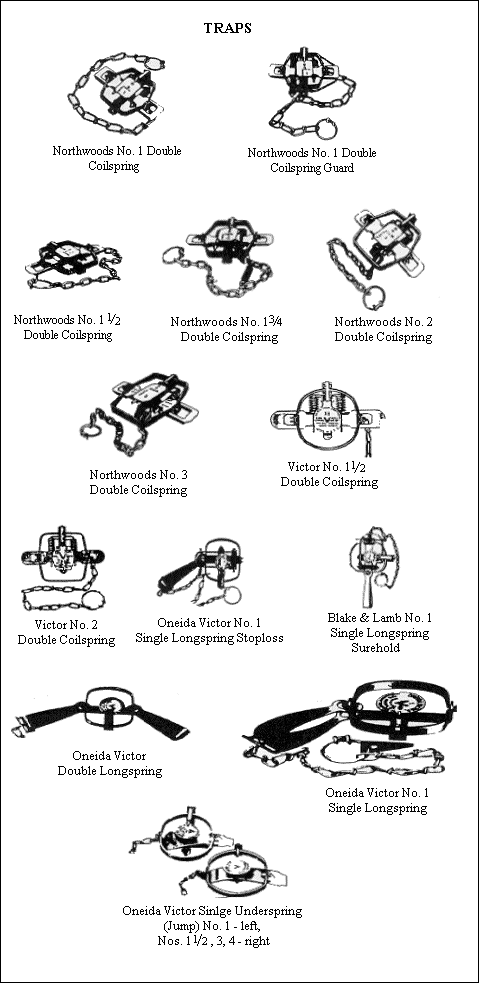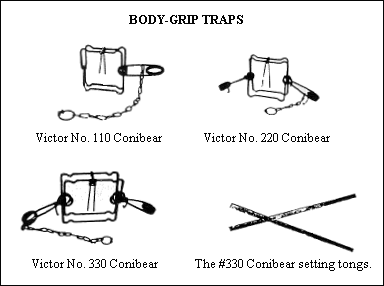
A beginning trapper should determine what animals he plans to trap for and buy traps which are suitable for those animals. A general guide to trap sizes for various animals would be:

As you can see, the larger trap size number means a larger, more powerful animal. The larger traps have more holding power than those with the lower number. All the traps that are listed here are the leghold traps.
Another trap that is in use today is the body gripping trap. These traps are designed to humanely kill the animal. The bodygrip traps are used by trappers pursuing animals such as muskrat, beaver, raccoon, mink and skunk. Bodygrip traps come in different sizes and are used for these animals as follows:

Bodygrip type traps are not designed to maintain an animal alive. Extreme care and discretion should be used when using these traps on land to avoid any contact with pets or non-target land dwelling animals.